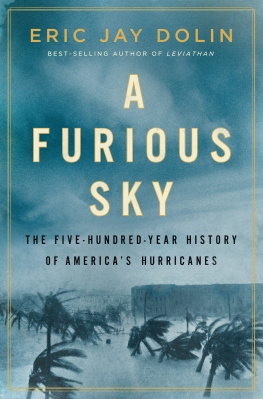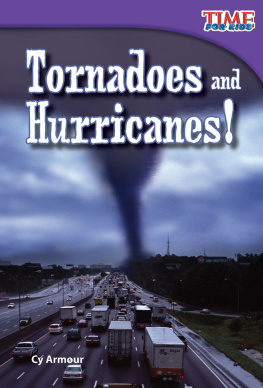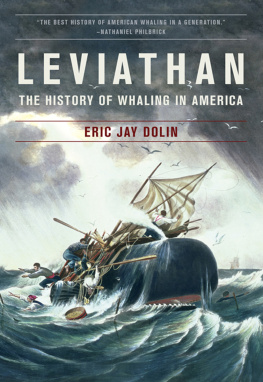A
F URIOUS S KY

The Five-Hundred-Year
History of
Americas Hurricanes

ERIC JAY DOLIN

Copyright 2020 by Eric Jay Dolin
All rights reserved
First Edition
For information about permission to reproduce selections from this book, write to Permissions, Liveright Publishing Corporation, a division of W. W. Norton & Company, Inc., 500 Fifth Avenue, New York, NY 10110
For information about special discounts for bulk purchases, please contact W. W. Norton Special Sales at specialsales@wwnorton.com or 800-233-4830
Jacket design by Richard L Joenes
Front Jacket Photograph : State Archives of
Florida, Florida Memory
Back Jacket photograph : (HURRICANE ISELLE) SCIENCE
HISTORY IMAGES / ALAMY STOCK PHOTO
Library of Congress Cataloging-in-Publication Data is available
Book design by Barbara M. Bachman
Production manager: Anna Oler
ISBN 978-1-63149-527-4
ISBN 978-1-63149-528-1 (eBook)
Liveright Publishing Corporation, 500 Fifth Avenue, New York, N.Y. 10110
www.wwnorton.com
W. W. Norton & Company Ltd., 15 Carlisle Street, London W1D 3BS
To Jennifer,
who always believes in me

C ONTENTS


(S UPPLIED BY A S UB -S UB -L IBRARIAN )
Out of the south cometh the whirlwind.
JOB 37:9
Good God! What horror and destruction....
It seemed as if a total dissolution of nature was taking
place. The roaring of the sea and wind, fiery meteors
flying about it in the air, the prodigious glare of almost
perpetual lightning, the crash of the falling houses,
and the ear-piercing shrieks of the distressed,
were sufficient to strike astonishment into angels.
A TEENAGE ALEXANDER HAMILTON, WRITING
TO HIS FATHER, DESCRIBING A HURRICANE
THAT BARRELED INTO HIS HOME ISLAND
OF ST. CROIX IN LATE AUGUST 1772
Reader, persons who have never witnessed a hurricane,
such as not infrequently desolates the sultry climates
of the south, can scarcely form an idea of their terrific
grandeur.... Like a scythe of the destroying angel, it
cuts everything by the roots... when at last its frightful
blasts have ceased, nature, weeping and disconsolate,
is left bereaved of her beautiful offspring.
JOHN JAMES AUDUBON (1834)
There is probably no feature of nature more
interesting to study than a hurricane, though feelings of
the observer may sometimes be diverted by
thoughts of personal safety.
F. H. BIGELOW (1898)
Remember to get the weather in your god
damned bookweather is very important.
ERNEST HEMINGWAY TO JOHN DOS PASSOS (1932)
All the thousands of hurricane stories boil down to this,
that even with all modern scientific developments,
a man and his family can be alone in a hurricane,
as cut off by extreme peril from any human help as the
first naked Indian who ever died in one.
MARJORY STONEMAN DOUGLAS (1958)
With a nod to Herman Melville, whose classic Moby-Dick and, in particular, its prefatory materials with the same title gave me this idea.

T HE COST OR DAMAGE ESTIMATES FOR THE HURRICANES listed in the text are the costs as they were tallied in the year the hurricane occurred. Many people are also interested in how much the damage from past hurricanes would amount to in current dollars. Rather than clutter up the text with those amounts, Ive added two tables at the end of the book that cover the most expensive hurricanes in modern history. One table lists the hurricanes that caused at least $1 billion of damage in the year they occurred. The other table ranks the most expensive hurricanes according to the 2019 Consumer Price Index adjusted cost. Note that not all hurricanes mentioned in the text are in those tables. By the same token, many hurricanes in those tables are not discussed in the text.
FOR THE HURRICANES DISCUSSED in this book, death tolls are given. Before the 1980s, virtually all of the hurricane-related deaths tallied by officials were direct deaths. A direct death is more immediate and occurs during the storm. Examples include drowning, being hit by a flying object, or being crushed by a collapsing building. Since the 1980s, better records and methodologies have enabled people to track indirect deaths as well. Indirect deaths occur after the storm has passed. Examples might include being killed in a car accident because the electricity is out and there are no traffic lights; dying as a result of a preexisting health condition that is exacerbated by the stress or strain of the storm, or because your medicine runs out; being electrocuted days after the storm by a downed wire; or dropping dead of a heart attack while cleaning up debris.
The distinction between direct and indirect deaths is not always clear, and the time frame for counting deaths indirectly related to a given storm varies depending on who is doing the counting. For example, some might count only deaths that occur in the days and weeks after the storm, while others would include deaths taking place many months or even years later. Still, delineating between direct and indirect deaths is useful. Therefore, the death tolls reported in the text for hurricanes before the 1980s include direct fatalities only. For later hurricanes, numbers are presented for both direct and indirect deaths when available. Bear in mind, then, that the death tolls for hurricanes before the 1980s would be considerably higher if indirect deaths were also accounted for.
THE HISTORY OF EVERY hurricane has four basic components: the time leading up to landfall, the impact of the storm, the immediate response, and the long-term recovery. This book will focus on the first three, since the fourth component, or the long tail of every hurricane, may span decades and is a complex political and bureaucratic story that cant be adequately told or even summarized within the confines of a single book that covers so many hurricanes.

















